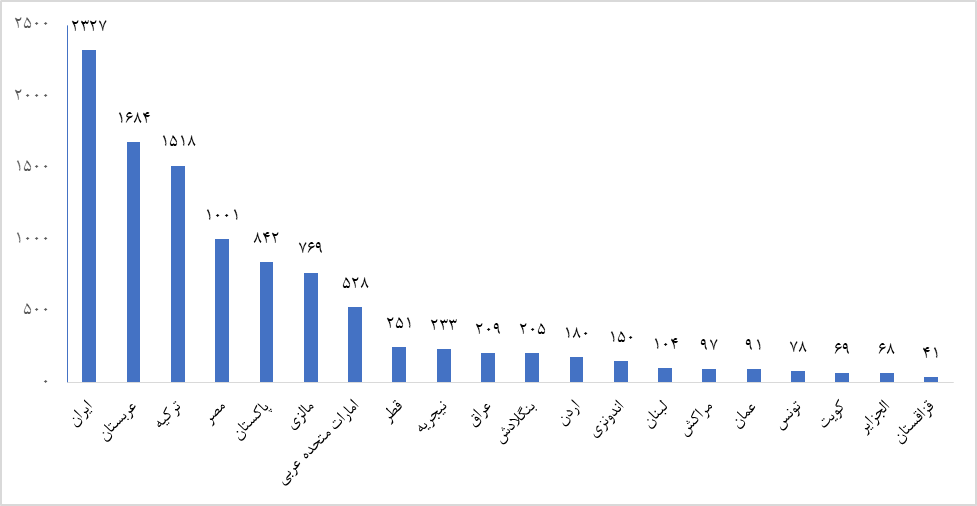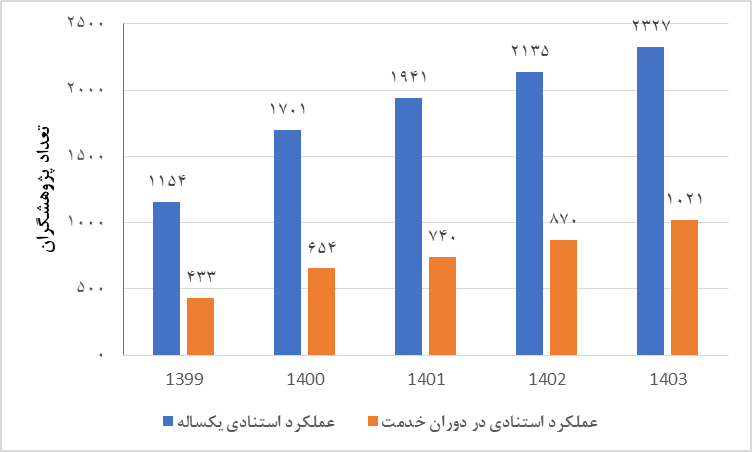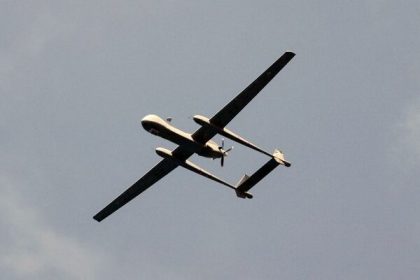According to the , citing the Institute for Citation and Monitoring of Science and Technology of the Islamic World (ISC), Dr. Seyed Ahmad Fazelzadeh, the head of the ISC Institute, said: Every year, the ISC Institute analyzes and reports the latest scientific findings obtained from various authoritative sources and authorities. . One of these reports is based on the latest findings of the joint project of Elsevier and a group of Stanford University researchers, known as the “Stanford University List”.
Fazelzadeh added: In the last few years, this group has identified and presented a list of the world’s best cited researchers in a database by analyzing the data of the Scopus database based on a special methodology. The invented methodology is based on a set of standardized citation metrics to evaluate the citation impact of researchers in different disciplines and scientific fields. By combining these metrics, they have invented an index called “composite citation index” and introduced and calculated it in their 2016 article. This index is based on the number of received citations, position (co-authorship pattern) and Hersh index of authors.
The head of ISC Institute further said: The latest update of this database was published in Mehr 1403 (September 2024). This list has analyzed the citation performance of authors for their published research outputs in the period from 1960 to 2023 in 22 main subject areas and 174 sub-areas, and based on this, authors who are among the top two percent of cited researchers in the world has introduced
It is worth mentioning that, in each edition, this database publishes two lists of highly cited researchers in the top two percent of the world. The difference between these two lists is in the time frame of analyzed citations: in one of the announced lists, the time frame of received citations is one year, and in the other list, the time frame of received citations is considered from 1996 onwards. In this report, there is a list of highly cited researchers in the top two percent of Iran and Islamic countries based on one-year citation performance.
The trend of the presence of the most cited researchers in the world and Islamic countries
Fazelzadeh stated: In the list published based on one-year citation performance in 2023, the number of 2 thousand 327 researchers and based on the period of service, 1021 researchers with organizational affiliation of the Islamic Republic of Iran, respectively, among the total number of 223 thousand, 152 thousand and 217 thousand And 97 international researchers are present.
Chart number one shows the growth trend of the number of highly cited Iranian researchers in the top two percent of the world based on one-year citation performance and tenure.
As can be seen, the number of highly cited Iranian researchers in this database has been growing.
Chart 1: Frequency of highly cited Iranian researchers in two percent of the world based on one-year citation performance and tenure
Chart 2 shows the top twenty Islamic countries in the frequency of two percent researchers based on one-year citation performance. The Islamic Republic of Iran ranks first in terms of the number of highly cited researchers in the top two percent among Islamic countries, and the countries of Saudi Arabia and Turkey are in the second and third ranks, respectively.
Chart 2: Frequency of two percent highly cited researchers in twenty Islamic countries based on one-year citation performance – 2023

Chart 3 shows the top twenty Islamic countries in the number of two percent researchers based on the citation performance of the service period. The Islamic Republic of Iran ranks second in terms of the number of highly cited researchers, the top two percent among Islamic countries after Turkey, and Saudi Arabia ranks third.
Chart 3: Frequency of two percent highly cited researchers in twenty Islamic countries based on the citation performance of the service period – 1996-2023
The share of science and technology institutions of the country among the most cited researchers is the top two percent in the world
The head of ISC Institute said: The table shows the general situation of highly cited Iranian researchers based on organizational affiliation in one-year citation performance. As can be seen, the Ministry of Science, Research and Technology has the largest share of highly cited Iranian researchers (50.37%).
Table 1: Frequency distribution of highly cited researchers based on one-year citation performance in macro-organizational affiliations – Year 2023
percentage | The number of researchers | Organizational affiliation |
37/50 | 1172 | Ministry of Science, Research and Technology |
37/39 | 870 | |
7/39 | 172 | Islamic Azad University |
4/86 | 113 | other |
100 | 2327 | plural |
Table 2 shows the general situation of highly cited Iranian researchers based on the citation performance during their service. As can be seen, the Ministry of Science, Research and Technology has the largest share of highly cited Iranian researchers (64.15%).
Table 2: Frequency distribution of highly cited researchers Based on the cited performance of the service period In macro organizational affiliations – Years 1996-2023
percentage | The number of researchers | Organizational affiliation |
15/64 | 655 | Ministry of Science, Research and Technology |
22/33 | 228 | Ministry of Health and Medical Education |
8/42 | 86 | Islamic Azad University |
5/09 | 52 | other |
100 | 1021 | plural |
Most cited researchers in the top two percent of the country by subject area
He added: Table 3 shows the number of highly cited researchers in the country in the top two percent of the world’s most cited researchers (one-year citation performance) by subject area. As can be seen, the four subject areas of clinical medicine, chemistry, engineering, and strategic technologies (artificial intelligence, nano, advanced manufacturing processes, etc.) ranked first to fourth among the subject fields in terms of the number of highly cited researchers. have done
Table 3. The frequency and share of highly cited researchers in two percent of the country based on one-year citation performance by subject area – Year 2023
the world | Iran | Thematic areas | row | ||
share of total (percentage) | The abundance of researchers | share of total (percentage) | The abundance of researchers | ||
30/63 | 68343 | 31/93 | 743 | Clinical medicine | 1 |
6/81 | 15189 | 01/18 | 419 | Chemistry | 2 |
7/71 | 17196 | 16/46 | 383 | Engineering | 3 |
9/27 | 20696 | 13/75 | 320 | Strategic technologies (artificial intelligence, nano, etc.) | 4 |
8/52 | 19007 | 5/16 | 120 | Physics and astronomy | 5 |
3/30 | 7375 | 13/4 | 96 | Agriculture, fisheries and forestry | 6 |
80/6 | 15175 | 3/48 | 81 | Information and communication technology | 7 |
7/48 | 16690 | 2.02 | 47 | biomedicine | 8 |
3/47 | 7742 | 1/63 | 38 | Earth and environmental sciences | 9 |
3/88 | 8663 | 1/12 | 26 | biology | 10 |
1/22 | 2719 | 1/03 | 24 | Statistics and mathematics | 11 |
0.58 | 1303 | 0.43 | 10 | Environment, design and construction | 12 |
1/73 | 3869 | 0.34 | 8 | Public health and health services | 13 |
2/82 | 6282 | 0.26 | 6 | Economics and business | 14 |
2/62 | 5848 | 0.13 | 3 | Social sciences | 15 |
0.54 | 1197 | 0.09 | 2 | Communication and textual research | 16 |
0.48 | 1074 | 0.04 | 1 | Historical studies | 17 |
1/86 | 4144 | 0 | 0 | Psychology and cognitive science | 18 |
0.24 | 526 | 0 | 0 | Philosophy and theology | 19 |
0.05 | 114 | 0 | 0 | Visual and performing arts | 20 |
100 | 223152 | 100 | 2327 | total sum | |
Fazelzadeh continued: Table 4 shows the number of most cited researchers in the country in the top two percent of the world’s most cited researchers (citation performance during service) by subject area. As can be seen, the four subject areas of engineering, chemistry, strategic technologies (artificial intelligence, nano, advanced manufacturing processes, etc.) and clinical medicine account for 83.25% of all highly cited researchers in Iran.
Table 4. The frequency and share of highly cited researchers in two percent of the country based on the citation performance of the service period by subject area – The years 1996-2023
the world | Iran | Thematic areas | row | ||
share of total (percentage) | The abundance of researchers | share of total (percentage) | The abundance of researchers | ||
7/88 | 17118 | 24/78 | 253 | Engineering | 1 |
6/87 | 14911 | 20/37 | 208 | Chemistry | 2 |
8/44 | 18317 | 19/78 | 202 | Strategic technologies (artificial intelligence, nano, etc.) | 3 |
25/31 | 67839 | 18/32 | 187 | Clinical medicine | 4 |
20/9 | 19980 | 80/4 | 49 | Physics and astronomy | 5 |
6/95 | 15087 | 4/31 | 44 | Information and communication technology | 6 |
3/35 | 7265 | 74/2 | 28 | Agriculture, fisheries and forestry | 7 |
1/24 | 2693 | 1/67 | 17 | Statistics and mathematics | 8 |
40/3 | 7388 | 1/27 | 13 | Earth and environmental sciences | 9 |
7/78 | 16898 | 0.69 | 7 | biomedicine | 10 |
0.57 | 1243 | 0.59 | 6 | Environment, design and construction | 11 |
99/3 | 8656 | 0/39 | 4 | biology | 12 |
33/2 | 5063 | 0.20 | 2 | Social sciences | 13 |
1/77 | 3841 | 0.10 | 1 | Public health and health services | 14 |
1/91 | 4137 | 0 | 0 | Economics and business | 15 |
1/78 | 3871 | 0 | 0 | Psychology and cognitive science | 16 |
0.50 | 1081 | 0 | 0 | Historical studies | 17 |
0.49 | 1074 | 0 | 0 | Communication and textual research | 18 |
0.24 | 523 | 0 | 0 | Philosophy and theology | 19 |
0.05 | 112 | 0 | 0 | Visual and performing arts | 20 |
100 | 217097 | 100 | 1021 | total sum | |
RCO NEWS


















